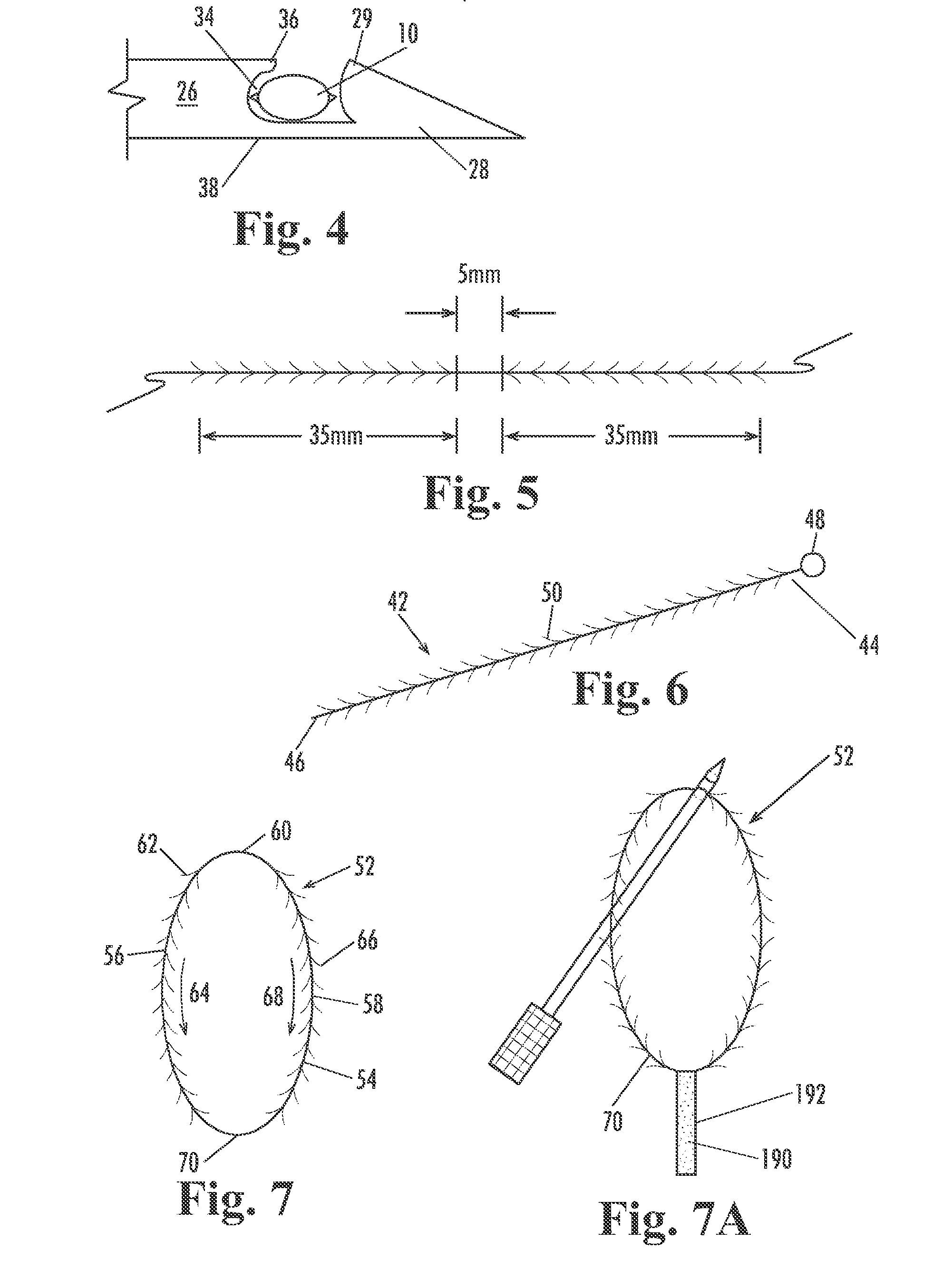Length of self-retaining suture and method and device for using the same
a self-retaining suture and length technology, applied in the field of self-retaining sutures, can solve the problems of complete or partial failure of the procedure, blood borne pathogen transmission, tissue damage, etc., and achieve the effect of minimal disruption of surrounding tissue and great accuracy
- Summary
- Abstract
- Description
- Claims
- Application Information
AI Technical Summary
Benefits of technology
Problems solved by technology
Method used
Image
Examples
first embodiment
TESTING OF FIRST EMBODIMENT OF THE PRESENT INVENTION
[0102]Applicants have conducted tests relating to the self-retaining suture assembly described above. The tests were designed to determine the pull strength required to remove the self-retaining suture length of the first embodiment of the present invention from within a test sample of mammalian tissue. A total of 62 threads were tested.
[0103]Some of the suture lengths were swedged onto a standard surgical needle. The standard surgical needle had a diameter of 0.68 mm. Other suture lengths were placed within the recess of the suture insertion device of the present invention as shown in FIGS. 2A and 2B. The diameter of the needle of the present invention was 0.70 mm. Another variable in the suture insertion device design was the curvature. Some of the samples tested had the suture length inserted by means of an attached needle and some of the samples tested had the suture length inserted by means of a detachable suture insertion dev...
PUM
 Login to View More
Login to View More Abstract
Description
Claims
Application Information
 Login to View More
Login to View More - R&D
- Intellectual Property
- Life Sciences
- Materials
- Tech Scout
- Unparalleled Data Quality
- Higher Quality Content
- 60% Fewer Hallucinations
Browse by: Latest US Patents, China's latest patents, Technical Efficacy Thesaurus, Application Domain, Technology Topic, Popular Technical Reports.
© 2025 PatSnap. All rights reserved.Legal|Privacy policy|Modern Slavery Act Transparency Statement|Sitemap|About US| Contact US: help@patsnap.com



